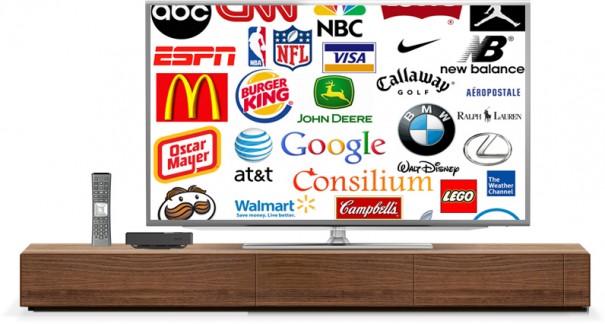2017 supondrá un cambio cualitativo en el papel de la tecnología publicitaria en televisión
La tecnología publicitaria en televisión, la importancia creciente de la programática y la convergencia de televisión y vídeo son algunas de las principales líneas que se prevé siga el mercado en este año.
Jana Eisenstein, directora general de Videology, ha hecho públicas una serie de consideraciones sobre cómo cambiará el mercado publicitario a lo largo de este año.
Eisenstein prevé que vivamos un cambio cualitativo en el papel de la tecnología publicitaria en televisión. A su juicio veremos un aumento considerable en el despliegue de tecnología publicitaria en todos los canales, que tendrá una activación particularmente rápida en rápida. En Reino Unido, 2017 será un año fundamental en el desarrollo de la televisión programática. Sky, Virgin y BT preparan productos publicitarios progresivos utilizando datos propios y la tecnología de los descodificadores. Estas plataformas harán accesible la TV total, con posibilidad de asignación de audiencias y medición en múltiples dispositivos de forma tan eficaz en la pantalla de TV principal como en otros dispositivos digitales.
También adelanta que la tecnología programática ganará más terreno y generará más eficiencias dentro del ecosistema, a través de tácticas planificadas de forma efectiva y dirigida, basadas en software de automatización. Según el informe eMarketer UK Programmatic Advertising Forecast Report 2016, este año la proporción del total de publicidad en vídeo digital gestionada programáticamente en Reino Unido superó por primera vez el 50%, llegando a los 553,4 millones de libras. En 2018, superará el 70%. eMarketer estima que el móvil será responsable del 63% del total del gasto publicitario en vídeo programático este año, y que en 2018 la proporción aumentará hasta el 85%.
Otra de las previsiones es que la compra de publicidad en televisión se moverá hacia el vídeo. La importancia de las compras garantizadas y de los marketplaces privados seguirá aumentando al tiempo que el vídeo desarrolle su propio camino hacia el futuro digital. Los modelos de compra de publicidad en TV seguirán siendo la base del mercado pero aprovecharán los beneficios de la tecnología para gestionar una cartera de compra cada vez más compleja y fragmentada. El informe 2016 UK Video Market At-A-Glance de Videology ha puesto de manifiesto la continua convergencia de la compra de publicidad en TV y vídeo: nueve de cada 10 anunciantes compran sus anuncios en vídeo en el mismo modelo garantizado que cuando compran spots de televisión.
Contenidos online
En cuanto contenidos online, Jana Eisenstein considera que la visualización de televisión y de contenido digital tiene cada vez más cosas en común dada la convergencia de los comportamientos del consumidor. La visualización online ya no es un nicho de comportamiento sino una actividad generalizada que atrae a distintos grupos de edad y de clase social. El vídeo digital premium es cada vez más visto en la pantalla de TV así como en otras pantallas más pequeñas, y tanto en entornos de visualización individual como de visualización compartida en grupo. Según Thinkbox, el 61,6% de la visualización de vídeo en Reino Unido en 2015 se realizó a través de TV en directo y el 35% a través de canales digitales. La visualización a través de canales digitales aumentó a casi el 52% entre los jóvenes de 16 a 24 años, y se espera que crezca más.
Con la maduración del mercado programático, se mantiene un progreso sustancial en medición, identificación y toma de decisiones publicitarias en tiempo real para mejorar la seguridad de la marca y la tasa de visualización de campañas, así como parta combatir el tráfico no humano. Algo que debe mantenerse si la industria quiere seguir operando eficazmente a escala y reasegurar a sus clientes clave, los anunciantes.
Los anunciantes demandarán, según Videology, más pruebas de eficacia en todo el embudo de conversión. Aunque la inversión en anuncios en vídeo digital ha aumentado, los anunciantes todavía siguen buscando comprender si sus esfuerzos en vídeo online han cambiado las opiniones sobre su marca, y cómo lo han hecho. En 2017 más agencias exigirán una forma fiable y cuantificable de mostrar a sus clientes la efectividad del vídeo para conseguir resultados.
Por otro lado, se hará un mayor uso de múltiples fuentes de datos en 2017, ya que más compañías tratan de combinar fuentes de datos fragmentadas en una visión unificada sobre distintos dispositivos. Las que lo consigan podrán utilizar fuentes como las mediciones de televisión, los datos de registro de las cadenas y operadoras, los datos de clientes de los anunciantes y datos de terceros con toda clase de datos de comportamiento, compra y geolocalización para crear una visión mucho más potente de su consumidor objetivo.
También cabe señalar que los cambios en la legislación de la Unión Europea, en particular en la regulación general de la protección de datos, volverán a situar la regulación sobre datos en el centro de todas las miradas al tiempo que marcas, agencias y medios actúan para asegurar que cumplen con la legislación.
Jana Eisenstein estima, por último, que la presión de los anunciantes sobre los cotos privados será mayor y más coordinada. Aun siendo conscientes del lugar esencial de Facebook y Google en los planes de medios, los anunciantes argumentarán cada vez más que es totalmente necesario que estén sujetos a la misma medición de terceros para ofrecer informes holísticos y comparables sobre las campañas. El reciente tropiezo de Facebook sobre los tiempos de permanencia en cada vídeo es indicativo de la necesidad de crear estándares universales de medición en los que pueda confiar todo el ecosistema, aseguran desde Videology.
¿Te gustó este artículo?
Suscríbete a nuestro NEWSLETTER y no te perderás nada.



